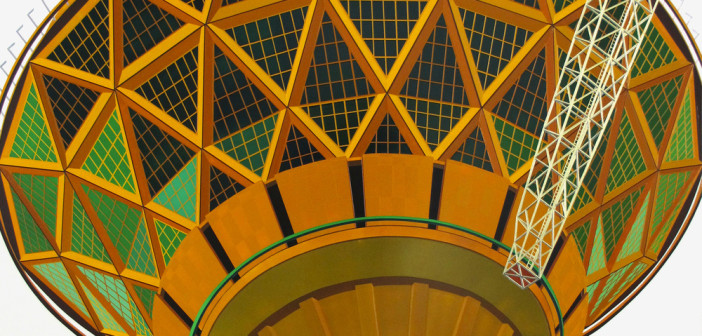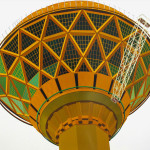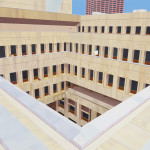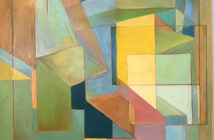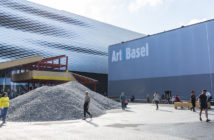In 1986, the Westin Stamford Hotel in Singapore became the newly crowned "world’s tallest hotel." Sensing an opportunity to attract Western investors into their market and a chance to appear competitive within the growing world economy, North Korea began construction on the Ryugyong Hotel, set to be at least 300 feet taller. Five years later, construction halted as North Korea entered a period of severe economic crisis, spurred in part by the fall of the Soviet Union. Though looming at full architectural height, it remained unfinished and vacant for 16 years, visibly neglected with no fixtures, furnishings or windows. So embarrassed was the Pyongyang regime that they made it common practice to airbrush out the structure from skyline photos. Four years ago, construction resumed on the hotel thanks to a partnership formed with an Egyptian conglomerate and it now stands out among the poverty reflected throughout the rest of Pyongyang, resembling a polished missile aimed towards the sky. Most report, however, that the interior still remains barren even as the country still positions the hotel among its greatest symbols of prosperity.
This intersection of architecture, nationalism and politics is where Daniel Rich’s paintings thrive. His presentation of the structure in Ryugyong Hotel, Pyongyang is able to encompass and justify all of these conflicting points. Painted in acidic greens, the skyline is both hazy and sparkling; the hotel towers over the other buildings while portraying an attitude that is at once majestic and unsophisticated. While this is surely a triumph of Rich’s handling of paint it is perhaps more of a reflection on how well he chooses his subjects to present an exhibition that so aptly fits the title "Platforms of Power."
Rich, a former student of the School of the Museum of Fine Arts, is interested in creating "…a dialogue about changing political power structures, failed utopias, and the devastations caused by ideological struggles, war, and natural upheavals." He achieves this through a juxtaposition of painted modernist architectural endeavors and high-capacity computer servers and with the likely influence of Precisionism. Much like the past artistic movement, Rich appears to be inspired by the industrialization of landscapes, streamlined architecture and machinery as they’re reflected heavily in the sharply defined shapes of his paintings. Where Rich differs is in his seductive patterning and surface treatments, which mirror the exteriors that he portrays. Though exceedingly flat, they react to the light like architectural Thibaults—somehow able to be both creamy and polished.
Among his other work, Rich presents four new paintings specially made for this exhibition with the two of most note focusing on Boston. One depicts a hidden view inside of Boston’s City Hall, exposing an architecture that is both awe-inspiring and a failure of its original intentions. The second reveals a space in Downtown Crossing, a unit used for the storage of high-capacity computer servers for governments and corporations. The result illustrates the recognizable face of global domination and politics and questions what is housed beneath the orderly exterior structures. The servers, like the buildings, are transformed from places that represent intellectual and technological progress to symbols of globalization and war. The lot creates, as curator Al Miner writes, "a delicate system whose success or failure affect worldwide economies," and one that begs for a unilateral disarmament of wealth.
- Daniel Rich, Milad Tower, Tehran, 2012, Acrylic on Dibond Courtesy the artist and Peter Blum Gallery, New York Courtesy of the Artist. Courtesty, Museum of Fine Arts, Boston
- Daniel Rich, City Hall, Boston, 2012, Acrylic on Dibond Courtesy the artist and Peter Blum Gallery, New York Courtesy of the Artist. Courtesty, Museum of Fine Arts, Boston
- Daniel Rich, Ryugyong Hotel, Pyongyang, 2012, Acrylic on Dibond Courtesy the artist and Peter Blum Gallery, New York Courtesy of the Artist. Courtesty, Museum of Fine Arts, Boston
Daniel Rich: Platforms of Power is on view now through March 31, 2013 at the Museum of Fine Arts Boston.

